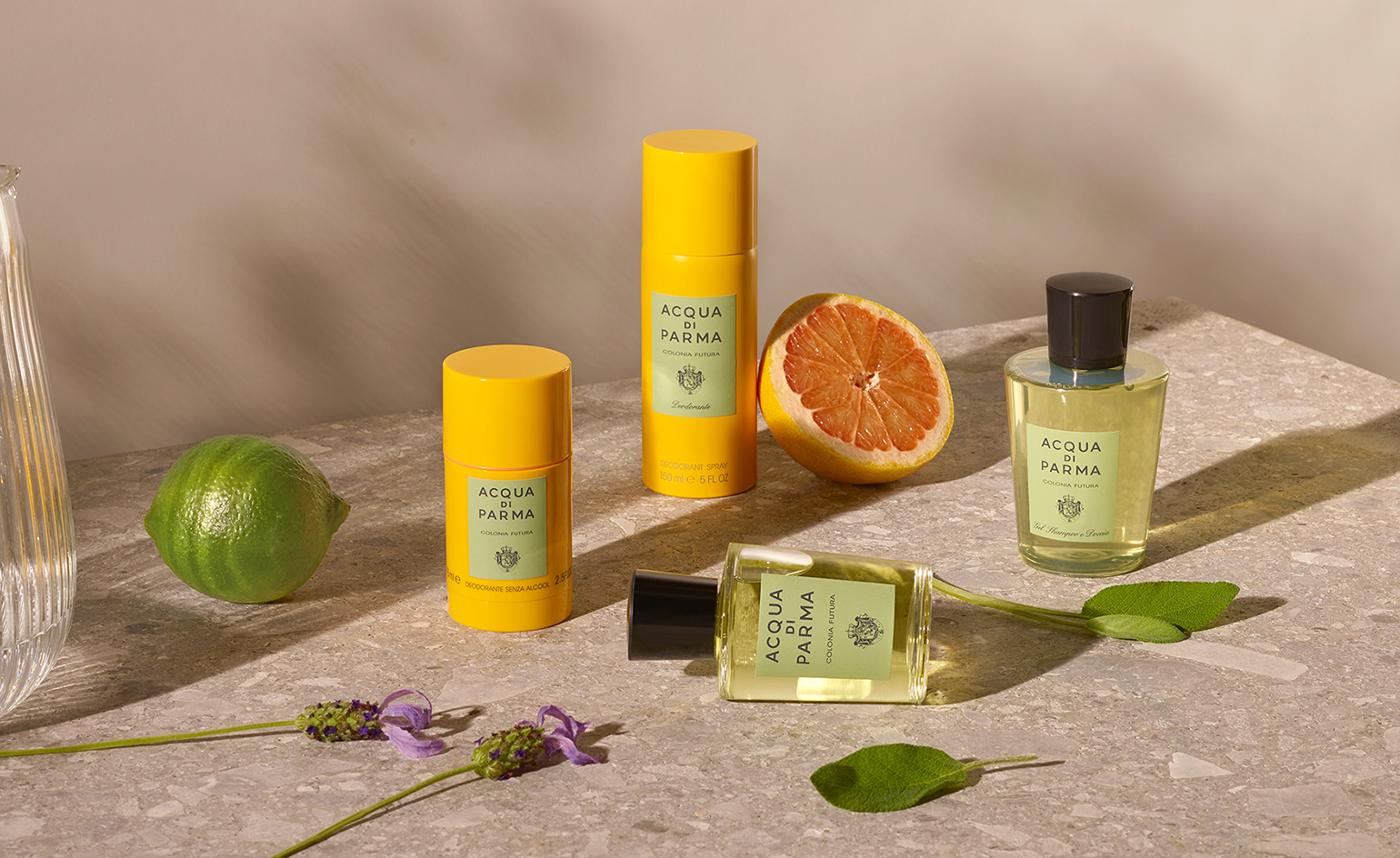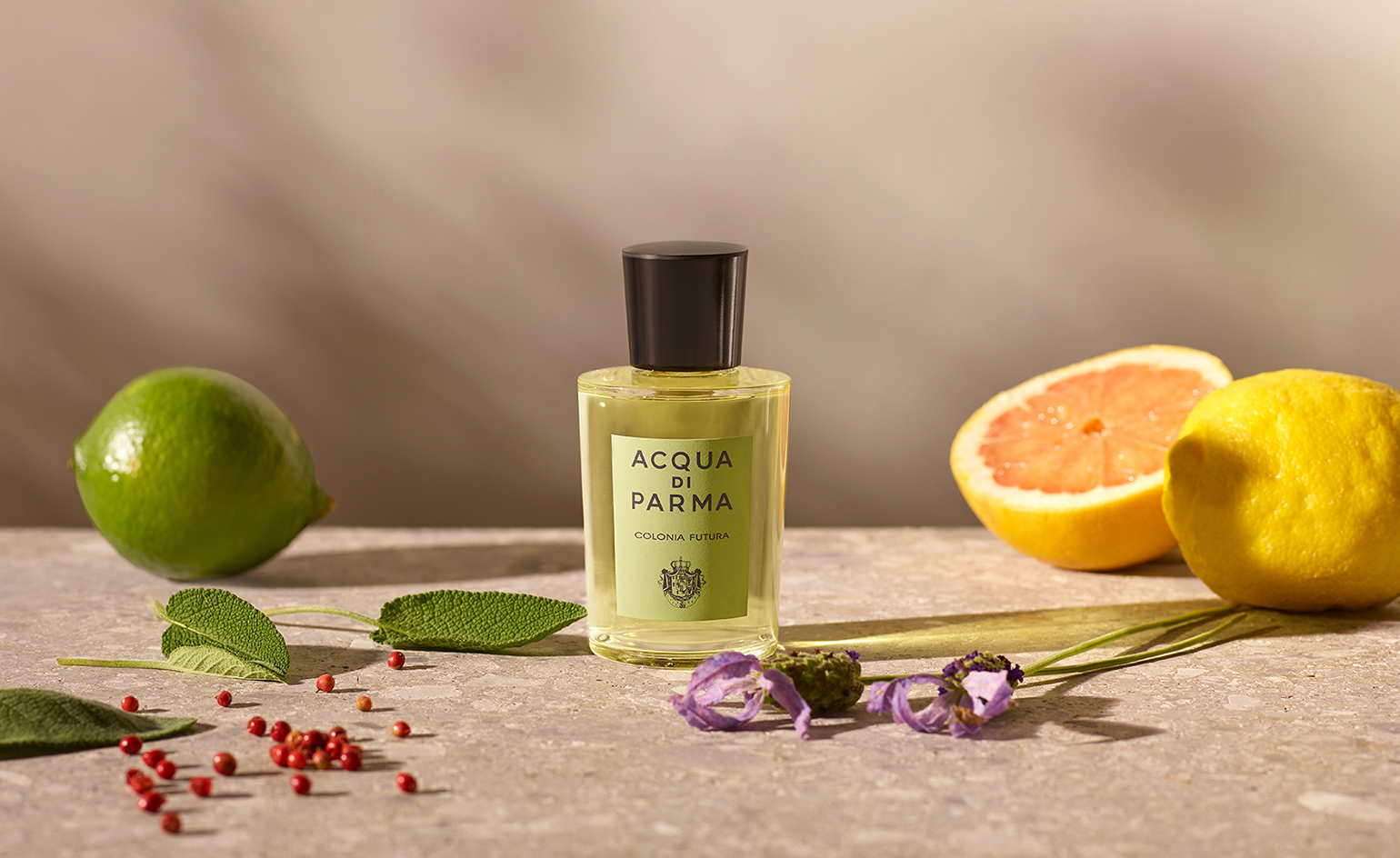Future scent: Acqua di Parma’s new sustainable perfumery
The heritage brand looks toward the future with a new eco-conscious scent

Sustainability has been a word bandied around by brands for years, but the world-altering events of 2020 have proven that industries need to rethink the environmental impact of their products sooner rather than later.
Acqua di Parma’s latest fragrance, Colonia Futura, is a prime example of how heritage brands can create more environmentally-friendly products without sacrificing on quality or dramatically altering their aesthetic. Its launch offers a case study in what will no doubt become an increasingly popular initiative for luxury brands in the coming months and years as consumers become more invested in sustainable beauty and grooming products.

Since its founding in 1916, Acqua di Parma has sought to preserve what it calls the ‘Art of Italian Living’. That means scents which draw inspiration from Italy's natural environs, notes of lemon, bergamot, seawater, and cypress are common, and packing influenced by Italy’s historic appreciation of timeless design.
Colonia Futura sees the brand pivoting that same mission into a contemporary context. Now, ‘preserving’ Italian living not only means celebrating the artistic and natural heritage of Italy, but also creating a product that tries to protect the environment it comes from.
The scent itself contains 99 per cent natural origin ingredients that adhere to the ISO16128 standard, which is an internationally recognised set of guidelines for the cosmetic industry that dictate what qualifies as natural and organic ingredients.
This emphasis on fully natural ingredients is a first for the brand, but the scent itself is still classically Acqua di Parma. Masculine and crisp, the fragrance combines bergamot from Calabria with the herby freshness of sage and the subtly floral scent of lavender with bright citrus notes.

The packing of fragrance likewise reflects a more eco-conscious ethos. The distinctive cylindrical black cap is now made from completely recycled products that can be recycled again after use, while the classic Acqua di Parma label is crafted from the scrap dust of marble quarries, and the recognisable bright yellow outside packaging in is made from recyclable cardboard.
Acqua di Parma’s new launch sees the brand reconfiguring a well-known product so that it responds to the concerns of our contemporary world. In doing so, it serves as a prime example of how heritage beauty brands will continue work towards being more eco-conscious in the coming years.
INFORMATION
Wallpaper* Newsletter
Receive our daily digest of inspiration, escapism and design stories from around the world direct to your inbox.
Mary Cleary is a writer based in London and New York. Previously beauty & grooming editor at Wallpaper*, she is now a contributing editor, alongside writing for various publications on all aspects of culture.
-
 Put these emerging artists on your radar
Put these emerging artists on your radarThis crop of six new talents is poised to shake up the art world. Get to know them now
By Tianna Williams
-
 Dining at Pyrá feels like a Mediterranean kiss on both cheeks
Dining at Pyrá feels like a Mediterranean kiss on both cheeksDesigned by House of Dré, this Lonsdale Road addition dishes up an enticing fusion of Greek and Spanish cooking
By Sofia de la Cruz
-
 Creased, crumpled: S/S 2025 menswear is about clothes that have ‘lived a life’
Creased, crumpled: S/S 2025 menswear is about clothes that have ‘lived a life’The S/S 2025 menswear collections see designers embrace the creased and the crumpled, conjuring a mood of laidback languor that ran through the season – captured here by photographer Steve Harnacke and stylist Nicola Neri for Wallpaper*
By Jack Moss